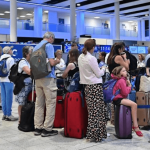
why young workers can’t shake presenteeism
Global – The spread of flexible work has been hailed as one of the biggest shifts since the pandemic. Newly empowered employees — knowledge workers in particular — can now decide when to work, the narrative says, adjusting their work schedule to their personal lives rather than sitting in front of a computer from 9 to 5.
However, some recent evidence suggests that such workday flexibility may be largely reserved for managers. According to a July 2022 study of 2,000 US and UK knowledge workers by digital work center Qatalog and software development platform Gitlab, 74% of executives are able to work to their own schedule — compared to 24% among junior employees. employees. This suggests that there may be a stark contrast between those who can control their time and work asynchronously and those who cannot.
These results are curious given that companies benefit from increased productivity and improved well-being when flexibility is an option for workers at all levels. Experts attribute this gap to presenteeism, which has plagued young workers for years; in a telecommuting or hybrid world, this means being online or in the chair during regular work hours, rather than enjoying the autonomy afforded to older colleagues.
But why exactly is the freedom to set one’s own schedule a privilege for senior workers when many junior workers are mired in “normal” working hours? Can this division be narrow, or is the presenteeism that leads to it just inevitable in the first few rungs of the career ladder, whether in the office or at home?
Keep Reading
How Presenteeism Affects Younger People
In a sense, presentism is a relic of the industrial age; factory bosses needed workers on site and judged their performance by tangible results. As office culture has grown and the results of work have become less recognizable, more time spent at the computer has become a symbol of productivity.
However, it’s not just about trusting juniors as good or bad employees. In some cases, organizations want their young employees to learn all aspects of the industry before they are given more independence, such as acquiring cultural etiquette, professional networks and jargon, which can be harder to achieve when working in isolation.
Growing Flexibility Gap
In the digital age, presentism has moved online; workers have shifted from late-night office hours to near-constant availability via email, Zoom, and messaging platforms. But the pandemic-driven rise in remote work appears to have created an even wider gap in trust between managers, who can make their work schedules, and junior employees, who often have to constantly demonstrate availability.









